- Administrator
- Albums and Singles
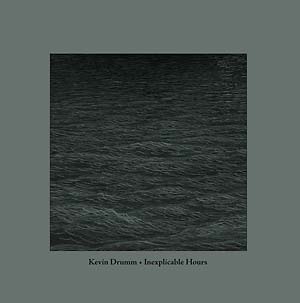
Inexplicable Hours is the sequel of the successful six-CD boxed set Elapsed Time, also released by Sonoris in 2017. The first LP documents a new direction in his music, with some of his last electroacoustic experimentations with audio generators, field recordings, and various electronic devices. The second one explores the same ambient/drone territories as the boxset, with tracks less static and more complex than it appears on the first listen. And as always with recent Kevin Drumm's music there's a sense of majesty, of mystery and a melancholic beauty that is uniquely his own.
More information can be found here.
Read More
- Administrator
- Albums and Singles

from kranky:
Not long after recording her 10th album, Ruins, Liz Harris traveled to Wyoming to work on art and record music. She found herself drawn towards the pairing of skeletal piano phrasing with spare, rich bursts of vocal harmony. A series of stark songs emerged, minimal and vulnerable, woven with emotive silences. Inspired by "the idea that something is missing or cold," the pieces float and fade like vignettes, implying as much as they reveal. She describes them as "small texts hanging in space," impressions of mortality, melody, and the unseen – fleeting beauty, interrupted. Grid Of Points stands as a concise and potently poetic addition to the Grouper catalog.
from Liz Harris:
Grid Of Points is a set of songs for piano and voice. I wrote these songs over a week and a half; they stopped abruptly when I was interrupted by a high fever. Though brief, it is complete. The intimacy and abbreviation of this music allude to an essence that the songs lyrics speak more directly of. The space left after matter has departed, a stage after the characters have gone, the hollow of some central column, missing.
Out April 27th. More information can be found here.
Read More
- Creaig Dunton
- Albums and Singles

This week Brainwashed is pleased to premiere Dylan Cameron’s “Graceless Gods”, part of the massive digital compilation the Holodeck label is releasing this week to commemorate their 50th release. "Graceless Gods" is a fitting teaser for the release, capturing everything he (as well as the label) excels at: heavy danceable beats, prickly, pulsating analog synths, and immaculate attention to sonic detail and production.
Holodeck Vision One features 30 artists from the label's past and present, as well as close associates such as Troller, Drab Majesty, and Michael Stein, and is available digitally on March 9. Dylan Cameron will also performing at both of the upcoming Holodeck SXSW showcases on March 15 at Hotel Vegas and March 17 at Central Presbyterian.
Preorder Holodeck Vision One at Holodeck's Bandcamp
Read More
- Administrator
- Albums and Singles
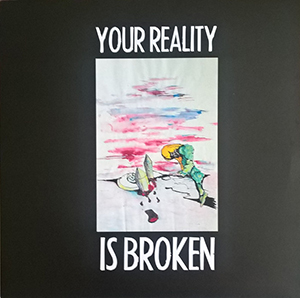 Ever since their inception in the late 1980s, this UK project has simultaneously dabbled both in the worlds of musique concret and harsh electronics; two styles that are undeniably similar but have very few in the way of crossover artists, all with a distinct sense of irreverence. Active again after a lengthy hiatus in the early part of the 21st century, Your Reality is Broken is another piece of work that successfully blurs unnecessary lines; in this case if it is a tribute album to them, a remix collection, or a compilation of collaborations. In truth, it is all of these things at once, and it is excellent.
Ever since their inception in the late 1980s, this UK project has simultaneously dabbled both in the worlds of musique concret and harsh electronics; two styles that are undeniably similar but have very few in the way of crossover artists, all with a distinct sense of irreverence. Active again after a lengthy hiatus in the early part of the 21st century, Your Reality is Broken is another piece of work that successfully blurs unnecessary lines; in this case if it is a tribute album to them, a remix collection, or a compilation of collaborations. In truth, it is all of these things at once, and it is excellent.
There are only five artists who were invited to participate in this release, each providing one piece that is either a reworking of Contrastate material, a collaboration with them, or in the case of the opening piece, Contrastate covering themselves.The remainder of Your Reality is Broken are artists that also work between those two aforementioned stylistic poles:RLW, Troum, Genocide Organ, Band of Pain, and État D'Urgence.
Contrastate’s self-reflexive contribution, "The People Who Control the Information," is built upon a different piece that was previously only performed live in 1997, "The People Who Read the Books."In its opening moments it is largely a spoken word performance, with ringing electronics filling the otherwise wide open spaces around the vocals.Sharp, grinding electronics tear through and hints of rhythm appear, which eventually solidify into an almost reggae like beat.By the time it all comes together, it is a bizarre combination of noisy electronics, spoken word, and dancehall beats; a strange combination no doubt, but also one that works very well.
Troum's "An End Marked, as Time Began" is constructed by the legendary drone act from three existing Contrastate works plus their own cover of "An End Marked By Pessimism."Besides the aforementioned song, this is pretty much the other most musical piece here.Troum blend the existing recordings into a sustained wall of cavernous sound, making for a murky and somewhat oppressive sonic feel.With snatches of voice peppered throughout and swirling strings later introduced, it comes together in a surprisingly melodic and classical-tinged form.
"Son of Sam" is a reworking of the same titled composition from the band's 2012 A Breeding Ground for Flies album that is credited to both Genocide Organ and Contrastate on the sleeve, so I am not sure if it is a collaboration or a reworking, but it is distinctly GO in sound.This is the modern day form of the legendary band, which is less about intentionally lo-fi noise and more atmospherically bleak.The treated and flanged vocals are of course there, as is the droning, abrasive Korg MS-10 synth, but the whole piece is very clean and well refined, more depressive than aggressive.Steve Pittis' Band of Pain uses material from English Embers and In Absentia to build "Re-establishing Beams (#9)":a mélange of echoing thuds and jarring, drill-like electronics that are at first right in line with old school noise sensibilities but eventually goes in to more restrained, subtle places.
Ralf Wehowsky (as RLW) and État D’Urgence each supply the more disturbing, discomforting tributes on this record.The former's "Goodbye Great Nation 2016" is a pairing of churning sub bass and piercing high frequencies that, while somewhat minimal at first, convey a splendidly sinister mood.Fragments of voice and chimes are weaved in, and with the random voices and mangled piano, it is an entirely disorienting and uncomfortable sounding composition.The latter’s "Assassinate En Arrière-Plan" is another where vocals are up front and demonically processed, making for the most sinister and horror-esque moments of this record.
Your Reality is Broken is a bit of an odd compilation, but one that is undoubtedly Contrastate, and the artists selected all reflect this idiosyncratic approach just as well.All of the artists contribute excellent reworkings or inspired pieces, but I also appreciate the classic compilation feel to the record.The mix of artists, the presentation, the style, it all reminded me of classic albums like the Rising from the Red Sands series or albums put out by RRRecords a few decades ago.It simply hits all the right buttons from beginning to end.
samples:
- Contrastate, "The People Who Control the Information"
- RLW, "Goodbye Great Nation 2016"
- Genocide Organ/Contrastate, "Son of Sam"
 
Read More
- Administrator
- Albums and Singles
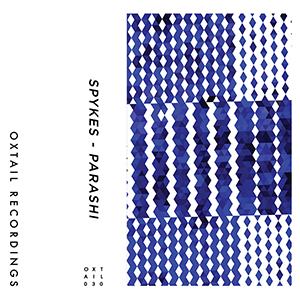 The four untitled pieces that make up this (similarly untitled) cassette were recorded one November in 2016 as John Olson (Spykes) was in the upstate New York area and looking to collaborate. Thus enters electronics virtuoso Mike Griffin (Parashi, also a member of psych rock collective Burnt Hills), and the two got together in Griffin's suburban basement studio. With Olson in full on psy jazz mode and Griffin manning the pedals, the final product is a combination of two disparate, yet perfectly complementary performers.
The four untitled pieces that make up this (similarly untitled) cassette were recorded one November in 2016 as John Olson (Spykes) was in the upstate New York area and looking to collaborate. Thus enters electronics virtuoso Mike Griffin (Parashi, also a member of psych rock collective Burnt Hills), and the two got together in Griffin's suburban basement studio. With Olson in full on psy jazz mode and Griffin manning the pedals, the final product is a combination of two disparate, yet perfectly complementary performers.
The first of the four performances builds up from a wall of squelchy loops and droning electronics conjured by Parashi.The noise chaotic and at times seemingly random, but clearly under Griffin's control as Olson's reeds rise up like a snake charmer’s cobra.The nasal tones contrast the crunching electronic rumble expertly, pairing the organic with inorganic and the two perfectly complementing each other.
Olson's reeds lead off the second performance as well:a pained caterwaul cutting through the surging, spacious electronics that nearly engulf his playing.With time Griffin introduces some treated tapes and sputtering voices, as Olson works in some unconventional reed noises.Eventually he switches over to saxophone and the mood turns to a jazzier one.While Olson gets down, Griffin's electronics are repurposed into expanding waves of sound and textured with flatulent bursts and ending with sputtering, decaying electronics.
On the other side of the tape, the horns and scraping electronics come out aggressively, like white noise sheets piled atop a buzzing electric generator.Eventually Olson takes a break from actually playing his instrument and instead uses it to make a slew of noises it was not intended for as Griffin keeps the electronics running.Soon the traditional horn sound is back and animal like noises come forth from sped up and mangled cassette tapes.By the end the duo sink into an almost conventional jazz groove, with horns in the lead and electronics taking up the role of the backing band in a pleasantly obtuse way.
The final collaboration is a slower growing one, at first a pairing of smooth horn and dubby, delayed electronics.The two exercise an admirable amount of restraint here, each contributing more subtle sounds and allowing them to expand in the mix, doing quite a bit of work with just a little in the way of actual performance.In its closing moments, however, the sound builds up powerfully.Olson keeps his playing jazzy and traditional, but Griffin works in a multitude of distortion and shrill, Theremin like blasts to end on an appropriately aggressive conclusion.
Listened to in isolation, it would at times seem like Spykes and Parashi are making sounds with drastically different intent from one another: when the former decides to take things smooth, the latter adds another pedal to the textural sonic abyss.Even with all of this contrast, the sound is always fitting and complementary between the two artists.They may have drastically different approaches to this recording, but Griffin and Olson’s performances bounce off each other perfectly, demonstrating both artists’ ability not only as performers, but improvisers in the classical sense.
samples:
 
Read More
- Administrator
- Albums and Singles
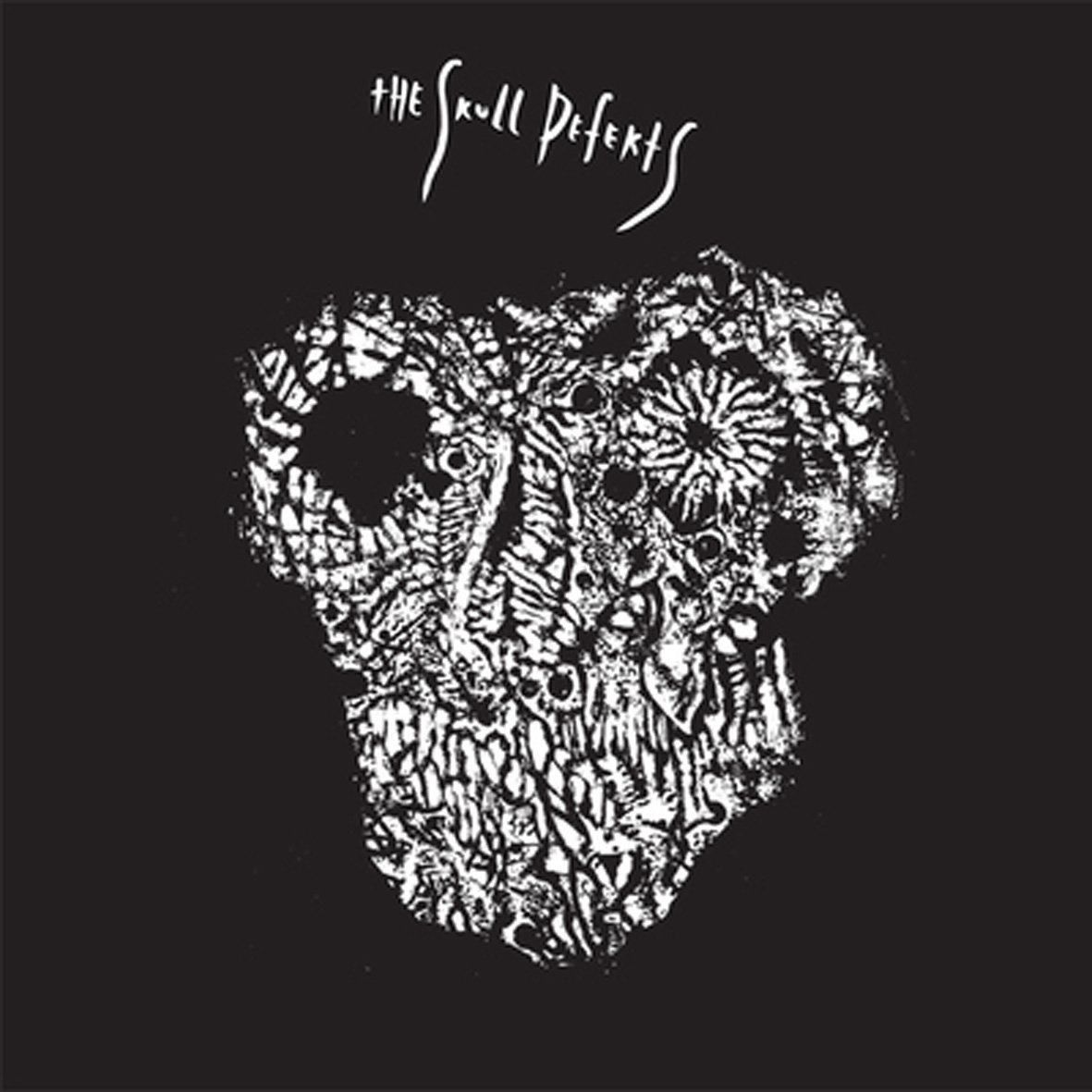 The Skull Defekts have long been one of the most baffling, wonderful, and unpredictable bands in underground music, equally likely to dazzle, disappoint, or just thoroughly confuse me with each fresh release. While far from infallible, they were also a restlessly experimental, viscerally heavy, and frequently fascinating creative force. Consequently, I am very sad to see them go, as The Skull Defekts is the band's farewell album (though a bit of the band's brutal alchemy continues to live on in The Orchestra of Constant Distress). As far as swan songs go, however, I am pleased to say that The Skull Defekts' final chapter is an especially strong one, inventively balancing noisy experimentation, art-damaged rock, and visceral brute force.
The Skull Defekts have long been one of the most baffling, wonderful, and unpredictable bands in underground music, equally likely to dazzle, disappoint, or just thoroughly confuse me with each fresh release. While far from infallible, they were also a restlessly experimental, viscerally heavy, and frequently fascinating creative force. Consequently, I am very sad to see them go, as The Skull Defekts is the band's farewell album (though a bit of the band's brutal alchemy continues to live on in The Orchestra of Constant Distress). As far as swan songs go, however, I am pleased to say that The Skull Defekts' final chapter is an especially strong one, inventively balancing noisy experimentation, art-damaged rock, and visceral brute force.
It recently occurred to me that my longstanding sticking point with The Skull Defekts is that they are essentially a wonderfully explosive noise band/art project that seems inexplicably hell-bent on masquerading as a rock band (at least for their Thrill Jockey albums).Sometimes their ruse works wonderfully and they are able to brilliantly distill that firepower into something hooky and songlike, but it also can be kind of an awkward fit, as this collective is just too fundamentally volcanic and idiosyncratic for conventional music.The face-melting opener "A Brief History of Rhythm, Dub, Life, and Death" is an especially powerful illustration of what this foursome are capable of when they completely disregard lyrics, riffs, choruses, and verses and just rip it up.It is noise at its absolute best, erupting as a cacophonous juggernaut of stomping kick drum, clattering junkyard percussion, blown-out bass, and vicious snarls of strangled feedback and mangled electronics.It never evolves into anything more and it truly does not need to, as it is a perfect and dynamically satisfying baseball bat to the face from start to finish.The following "Clean Mind" initially does a stellar job of following that seemingly impossible-to-follow opening salvo, as the band locks into a wonderfully bludgeoning bass and drum groove beautifully enhanced by some unexpected industrial percussion.The chorus riffing eventually loses me a bit, sadly, yet it is still ultimately quite a wonderfully feral song, sounding like a death-rock A Place To Bury Strangers that have completely gone off the rails into a frenzy of bent notes and feedback howls.That bracingly heavy one-two punch is certainly an attention-grabbing way to open an album, but the Defekts get a bit artier and more varied once the dust settles.
Although disappointingly brief, "The Dance" is a swaggering and simmering fully formed song that intriguing marries a playfully funky, palm-muted strumming pattern with gnarled, ugly riffage worthy of Godflesh.Significantly, the larger-than-life presence of Daniel Higgs is absent on this album, but that perversely benefits the band, as he always had a tendency to eclipse nearly everything around him.The current vocalists, Joachim Nordwall and new member Mariam Wallentin, blend into the underlying music quite a bit more seamlessly, making it much easier to notice Fagerström's densely churning riffs and The Skull Defekts' absolutely punishing rhythm section.I hate to bring up Godflesh again, but The Skull Defekts share an intuitive grasp of what makes heavy music great with Justin Broadrick: the sludgy tempo, the seismic percussive assault, the brutal guitar tone, and the absolutely ruthless sense of unstoppable forward motion.No frills, no clutter–just focused, relentless intensity.In the case of The Skull Defekts, however, that bulldozing power is not always the raison d'etre, as it is sometimes twisted into a hooky rock-like structure or employed as the foundation for something a bit artier or psych-damaged.
Wallentin's songs definitely tend to fall into the "arty" category, particularly "Slow Storm," which features a bloodless, poetic monologue over pummeling tribal toms and lysergic swaths of guitar noise. Stretching out into a heavy, trancelike groove suits The Skull Defekts especially well.Unexpectedly, however, the band also managed to craft a couple of strong would-be singles this time around too (their poppier instincts have historically been derailed by an excess of intensity or obtuseness).The strongest of the pair is "All Thoughts Thought," which blends taut post-punk riffing with howls of noise and reverberating metal percussion."The Beauty of Creation and Destruction" has a similarly punchy foundation, but takes a much richer direction harmonically, fleshing out the arrangement with vibrato-enhanced chord washes and a descending piano melody.Being the final song on the album, it has the honor of being The Skull Defekts final farewell and it is an unexpectedly tender one: gradually all of the heavier bits fall away to leave only an elegiac coda of maracas, piano, and a blearily moaning synth undercurrent.
Admittedly, I do not quite love (or even like) every single song on this album, but there are not any real missteps and the oft-crushing, laser-focused execution easily outweighs any wobbles in judgment.The Defekts have always been a chameleonic entity (sometimes maddeningly so), yet they have always been strikingly good at distilling their disparate influences into something that still sounds uniquely their own.All of that remains true with this album.The key thing is mostly that this is an especially strong batch of songs that have been painstakingly sculpted to sinewy perfection: when they are firing on all cylinders, The Skull Defekts tend to be better than any of the bands that they might resemble.And sometimes they even kick open some new doors themselves.With this record, they are in peak form on both fronts.This is my favorite Skull Defekts album in a long time and "A Brief History" may very well be the single best song that they have ever recorded, which begs the question "wait-you're breaking up now?!?"Knowing exactly when to leave is an undervalued skill, however: it is far better to close with an excellent album and leave everyone lamenting that they did not appreciate The Skull Defekts more when they had the chance than soldiering on when it does not feel right anymore.As bittersweet as this farewell is, The Skull Defekts certainly does a stellar job of bolstering their messy, strange, and fitfully brilliant legacy.
 
Read More
- Administrator
- Albums and Singles
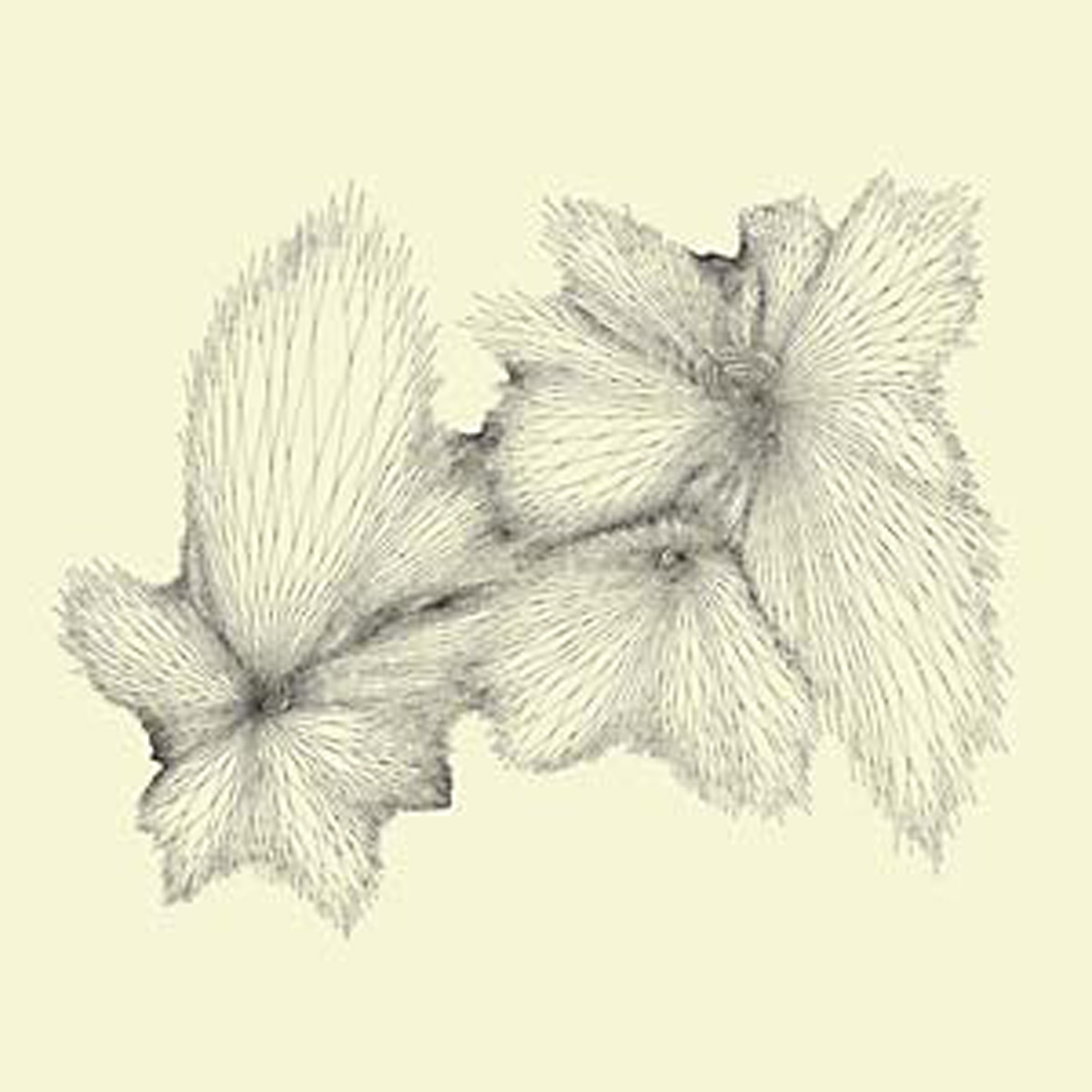 Back in 2001, Eyvind Kang recorded an absolutely wonderful album on Sun City Girls' Abduction imprint (Live Low To The Earth In The Iron Age), which I naturally missed because everything related to Sun City Girls was maddeningly difficult to find in those days. Also, I was not at all familiar with Kang back then, though he has long since become a reliably ubiquitous presence in the experimental music scene. Sadly, Live Low is still woefully out-of-print, but Kang has finally recorded its follow-up anyway. Plainlight is quite a bit different from the drone- and shoegaze-influenced post-rock of its predecessor though, as the only real consistent thread between the two is a vague aesthetic of rustic psychedelia. Instead, the two albums feel like very different stages of the same long journey, which is a large part of why Plainlight took so long to appear: Kang did not want to repeat himself and patiently waited until the next stage of this project's natural evolution finally revealed itself. If Live Low To The Earth can be said to resemble a slow, subtly hallucinatory journey across a vast, open plain, the more structured and ritualistic Plainlight is a glimpse inside an ancient and remote temple nestled in the mountains.
Back in 2001, Eyvind Kang recorded an absolutely wonderful album on Sun City Girls' Abduction imprint (Live Low To The Earth In The Iron Age), which I naturally missed because everything related to Sun City Girls was maddeningly difficult to find in those days. Also, I was not at all familiar with Kang back then, though he has long since become a reliably ubiquitous presence in the experimental music scene. Sadly, Live Low is still woefully out-of-print, but Kang has finally recorded its follow-up anyway. Plainlight is quite a bit different from the drone- and shoegaze-influenced post-rock of its predecessor though, as the only real consistent thread between the two is a vague aesthetic of rustic psychedelia. Instead, the two albums feel like very different stages of the same long journey, which is a large part of why Plainlight took so long to appear: Kang did not want to repeat himself and patiently waited until the next stage of this project's natural evolution finally revealed itself. If Live Low To The Earth can be said to resemble a slow, subtly hallucinatory journey across a vast, open plain, the more structured and ritualistic Plainlight is a glimpse inside an ancient and remote temple nestled in the mountains.
As is befitting for an album this exotic and lysergically meditative, the original inspiration for Plainlight cryptically came to Kang in a dream.The crux of the dream was the phrase "because a plainlight has fallen in Heaven, heartbreak would cease," which became a guiding mantra for Kang.Unsurprisingly, figuring out how translate such a gorgeously poetic phase into a gorgeously poetic album was a bit of challenge, but Kang ultimately decided that a droning backdrop of traditional Korean instruments felt right for his vision.The one striking exception is the title piece, which eschews drone for a lovely and lyrical melody of gently plucked gayageum and geomungo (both zither-like instruments totally unfamiliar to me).Kang himself plays vielle on the piece, which is a kind of medieval violin.As arcane as the instrumentation seems to my western ears, "Plainlight" is an elegantly simple piece, organically allowing its bittersweetly beautiful central theme to slowly build in power and momentum with a minimal accompaniment of quavering organ-like drones.Unexpectedly, it dissolves into a final coda of throbbing synth pulses beneath a shimmering vielle drone, which dispels the timeless spell and organic, wood-and-steel purity a bit, but that odd detour is not enough to mar an otherwise achingly lovely composition.The following "Bay of Fundy" is a bit of a wobble though, as it feels like a minimal drone interlude composed primarily to fill the remaining space on the first side of the record.It is not a bad piece, as it has kind of a glimmering celestial radiance, but unavoidably pales in comparison to its strikingly lovely processor.While I have heard plenty of other music in the same vein before, Kang at least gets to this well-traveled place in an unusual way, as the piece is essentially a duet for glass and sheng (with some added ultraharmonizer processing courtesy of producer Randall Dunn).
The second half of the record is devoted to Plainlight's tour de force, a lengthy ensemble piece entitled "Sanjaya the Sceptic."It seems to draw its inspiration from the story of Indian ascetic Sanjaya Belatthiputta, whose proto-existentialist philosophy has been amusingly described as "endless equivocation."Based on my minimal research, his most notable achievement seems to have been losing two of his students to Buddha because he "did not address their unresolved desire to end ultimate suffering."Kang’s darkly psychedelic and malevolently buzzing drone reverie is probably equally unlikely to end ultimate suffering, as it is a wonderfully hypnotic and shifting mirage rather than any kind of glimpse of enlightenment.It is certainly a great mirage though.Initially, it takes quite an eerily beautiful form, as a languorous arpeggio slowly rings out amidst buzzing tambura while an understated melody evasively intertwines itself, unpredictably appearing and disappearing like a ghost.Things soon take a much stranger turn, however, as the piece unexpectedly dissolves into a surreal cacophony of clattering Korean percussion and dissonantly harmonizing and undulating trumpet, trombone, and oboe drones, resembling some kind of nightmarish ritual procession. Gradually, that too settles down into a final simmering coda of spectral overtones slowly dancing over a spare backdrop of steadily clicking percussion, ending the album on a fittingly ambiguous and haunted note.
I am reluctant to say that Plainlight has any flaws, as it is an absolutely wonderful release, yet there are definitely some notable caveats that must be stated.For one, it is quite brief for an LP, clocking in at just under half an hour.That brevity feels even more extreme due to the inclusion of the 7-minute "Bay of Fundy," which is essentially just an interlude that bridges the album's two major statements.Also, I am concerned that Plainlight may also suffer the same fate as Live Low To The Earth, appearing only fleetingly in physical form, then damned to an eternal half-life of being heard only by obsessive fans who frequent obscure music blogs.Plainlight may be just two songs, but they are singular and gorgeous ones and people should hear them.Also, that leads me to yet another observation about this album: aside from the stylistic gulf that separates it from Live Low To The Earth, there is quite a dramatic and fundamental shift in scope as well.Live Low conjured up an expansive, sweeping vista to get deliciously lost in.Plainlight, on the other hand, is the polar opposite: all the beauty and mystery of Kang's vision distilled into just two perfect and pure glimpses of heaven.There may not be much here, but what is here is absolutely sublime and essential.
 
Read More
- Administrator
- Albums and Singles
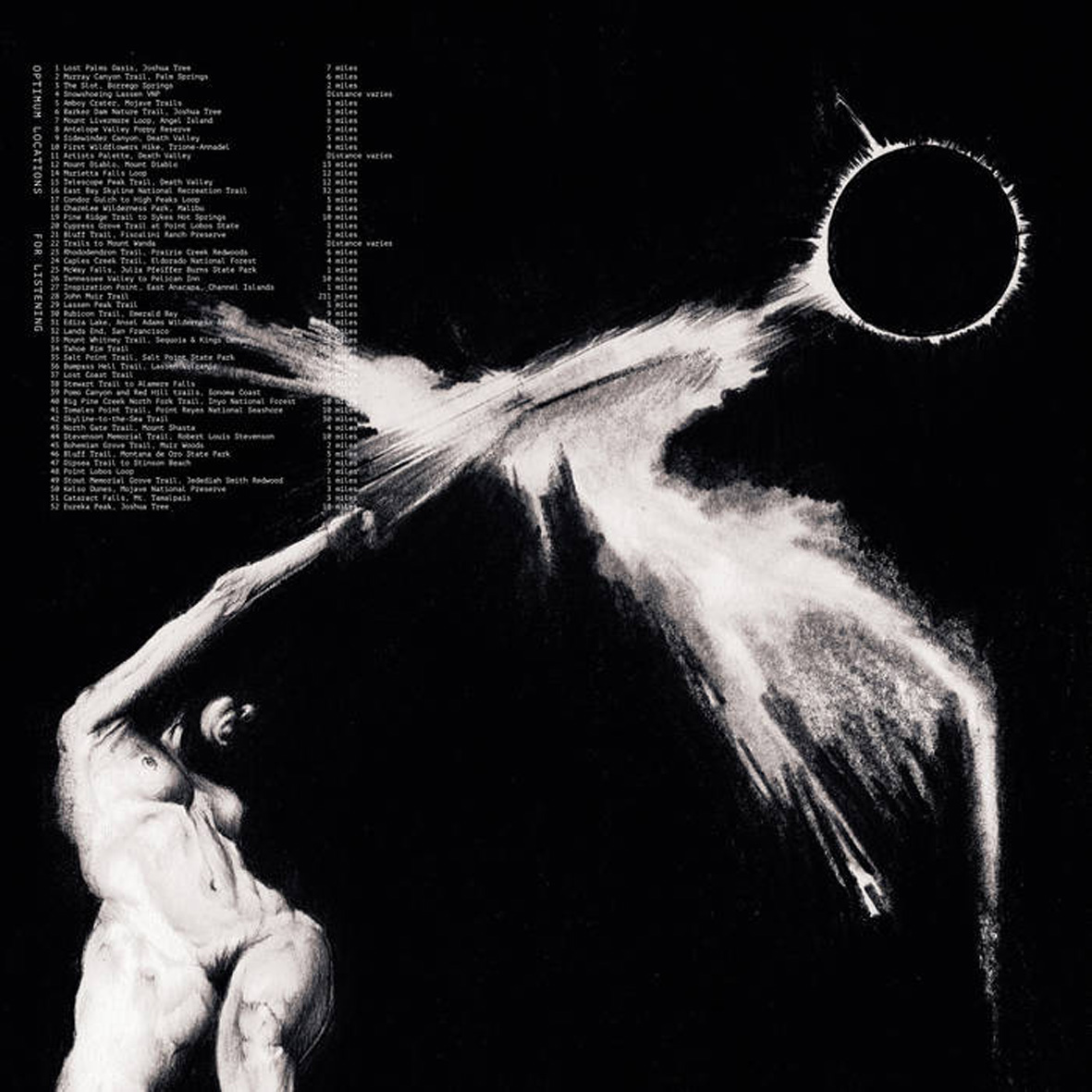 I cannot think of many other projects that have been quite as instantly revered as Fred Welton Warmsley III's Dedekind Cut, nor can I think of any other artists who could comfortably fit in at both Hospital Productions and Kranky. Tahoe, Warmsley's first album for the latter, admittedly focuses primarily on Dedekind Cut's more meditative, drone-based side, but there are still some moments ("Spiral," for example) that would not seem out of place on a Raime or Haxan Cloak album. That shifting and elusive aesthetic sometimes leads to some unusual sequencing choices and disorienting mood shifts, but any potential grumblings I may have about Dedekind Cut's fitfully focused vision are silenced by how gorgeous these pieces can be when Warmsley hits the mark (which he does with truly impressive frequency). This is one of the best albums that Kranky has released in a long time.
I cannot think of many other projects that have been quite as instantly revered as Fred Welton Warmsley III's Dedekind Cut, nor can I think of any other artists who could comfortably fit in at both Hospital Productions and Kranky. Tahoe, Warmsley's first album for the latter, admittedly focuses primarily on Dedekind Cut's more meditative, drone-based side, but there are still some moments ("Spiral," for example) that would not seem out of place on a Raime or Haxan Cloak album. That shifting and elusive aesthetic sometimes leads to some unusual sequencing choices and disorienting mood shifts, but any potential grumblings I may have about Dedekind Cut's fitfully focused vision are silenced by how gorgeous these pieces can be when Warmsley hits the mark (which he does with truly impressive frequency). This is one of the best albums that Kranky has released in a long time.
While Dedekind Cut is a fairly recent endeavor, it is actually just a new chapter in a much longer career, as Warmsley has been steadily releasing hip-hop and dance albums for almost a decade under the name Lee Bannon.That goes a long way towards explaining Warmsley's formidable talents as a producer, but it does not make Dedekind Cut's rise any less impressive, as there is not a huge amount of crossover between fans of Ninja Tune and people buying post-industrial drone tapes.I suppose there were some hints of a more blurred and ambient bent in the last few Lee Bannon albums, yet Dedekind Cut is very much a radical reinvention, a change perhaps best illustrated by Warmsley's recent unerring genius for choosing iconic and provocative cover art for his full-lengths.The dark and striking art for Tahoe is an especially interesting and perverse choice, as the album is largely inspired by the serene beauty of Walmsley's scenic surroundings (he now lives in Lake Tahoe).The art feels weirdly apt though, highlighting the bleary, haunted undercurrent that subtly darkens otherwise heavenly reveries like "The Crossing Guard."That pervasive ambiguity is what makes Tahoe such an unusually compelling release, as the glacial flow, understated nature sounds, and warm chords of the title piece all embrace blissful tranquility, yet they are swathed in enough murk and hiss to suggest that none of it is quite real.At its best, Tahoe feels like a hallucinatory and bittersweet plunge into swirl of happy memories being experienced in a distant and lonely place.An entire album in the vein of those two pieces, the swooning bliss of "Equity," or the lushly rapturous "De-Civilization" would probably be an absolute masterpiece, but Warmsley's mercurial muse leads him down some other paths as well.Some are great, while others are a bit less so.
For me, "MMXIX" falls in the latter category, as its gothic choral touches, choppy synths, and bizarrely shifting structure awkwardly disrupt the album's dreamlike spell.It a baffling piece from start to finish, opening with a flourish that calls to mind Oneohtrix Point Never's more bombastic moments, then dissolving into a surreal fugue of Tuvan throat-singing and benignly radiant New Age shimmer.I suppose that makes it one of the album’s more ambitious and experimental pieces, but it is alternately too fractured, too pastoral, and too heavy-handed to quite fit with the surrounding material.Tahoe's other divergences fare far better, however, resembling corroded negative images of the album's more lovely moments, albeit still with their own ephemeral flashes of beauty."Spiral," for example, sounds like it may have once been a quietly beautiful composition like some of Tahoe's other fare, but got twisted into a grotesque caricature of sharp treble; grindingly metallic textures; and swirling, dissonant overtones.Deep into the jabbering cacophony, there is a calm, structured chord progression unfolding, yet it is almost entirely eclipsed by what feels like a sustained howl of anguish.Elsewhere, the epic "Hollow Earth" is initially a feast of deep, hollow drones amidst evocative field recordings of natural night sounds.That soon dissolves into a gorgeous interlude of distantly reverberant choral music, but the idyll is jarringly short-lived, as the piece erupts into a roiling miasma of dense, blow-out bass; heavy drones; and arrhythmic kick drums.Rather than diving full-on into his best Haxan Cloak pastiche, however, Warmsley continually dissolves each new motif into another in a kind of languorously flowing dream logic.Eventually, "Hollow Earth" coheres into a lovely final coda of rippling waves and warmly beautiful synth melodies, which is admittedly a very neat trick.Within the sequencing context of the album, it briefly feels like Tahoe's blissed-out, soft-focus heaven is being ripped apart by a visceral surge of gnarled, ugliness, yet the howling gateway to hell is quickly sealed back up and everyone is (precariously) happy again.
Tahoe's final piece, "Virtues," is yet another quiet stunner, resembling an achingly beautiful organ mass languorously drifting through the mists of a dream.It is perfect end to a near-perfect album, racking up one last transcendent highlight on a release that was already stellar.Even taken purely on a surface level, most of these pieces are beautifully crafted, expertly balancing warmth and melody with hissing, blurred textures to weave an immersive and sensuous half-dream.With deeper listening, however, Tahoe reveals deeper emotional heft simmering beneath the surface and unexpected shadows flickering across the lovely billowing clouds of drone nirvana.  Much like some of Tim Hecker's albums, Tahoe is the kind of jewel in Kranky's catalog that perfectly embodies the label's aesthetic while simultaneously deepening and expanding it.This is one of the first great albums of 2018.
 
Read More
- Administrator
- Albums and Singles

October Language is the debut album by New Orleans-based duo Belong, comprised of Turk Dietrich and Mike Jones.
Since its release in early 2006, Belong's debut masterpiece has accumulated a dedicated cult following, with comparisons to the work of Christian Fennesz and Gas, with some claims that it plays like My Bloody Valentine's Loveless sans the songs. While these comparisons are useful for filing this album into a particular bin in the record shop, time has proven that October Language is a unique album which remains unmatched by its contemporaries.
Despite the warm and welcome accolades of the album's arrival, there was no vinyl pressing until 2009, of which a limited one-time pressing vanished immediately. Spectrum Spools is pleased to present a pristine vinyl cut to go with reimagined album art for the definitive edition of this legendary classic.
More information can be found here.
Read More
- Administrator
- Albums and Singles
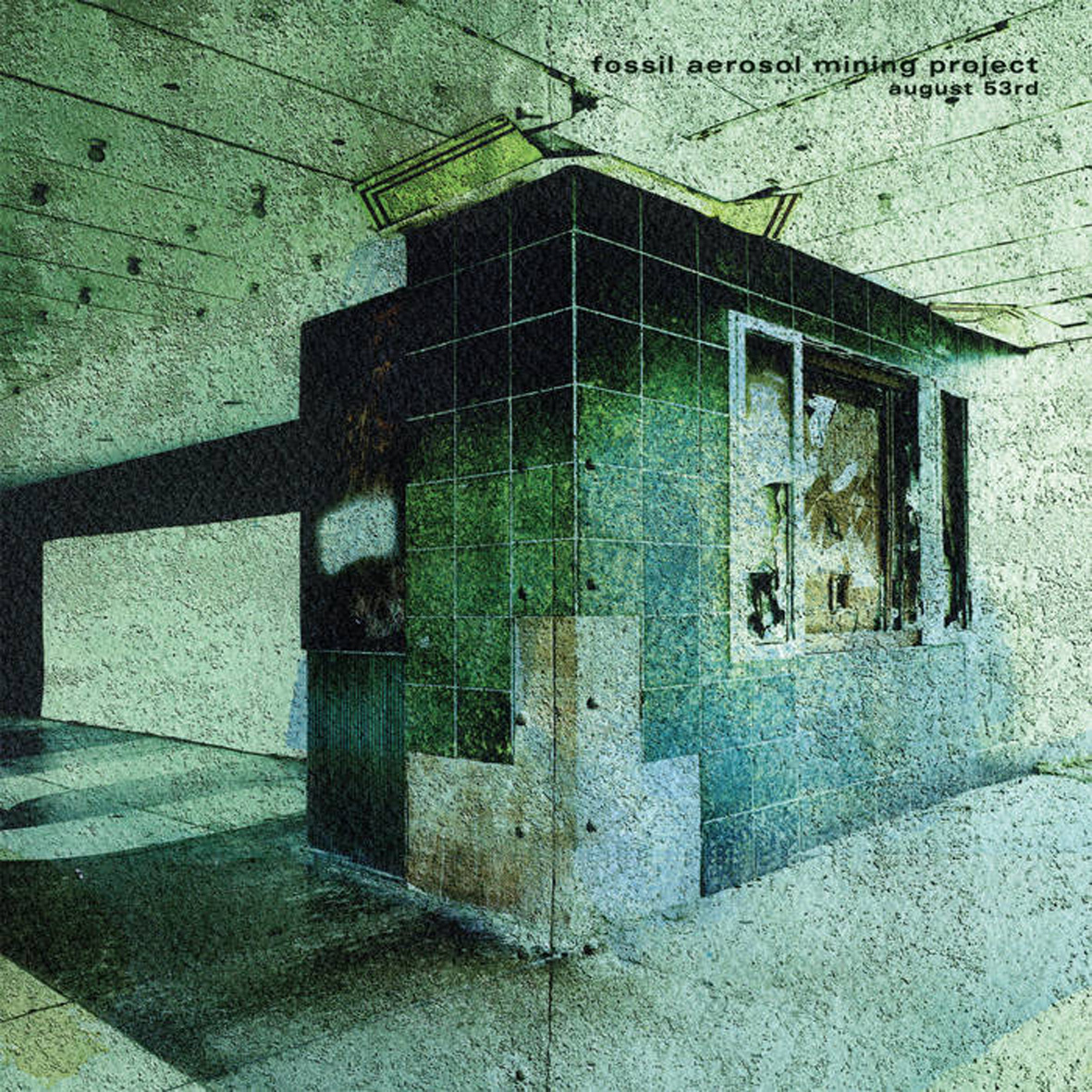
The last time I covered this enigmatic Midwestern ensemble, I was a bit frustrated by the limitations of their constrained palette, but I have since warmed to them quite a bit due to their endearingly obsessive commitment to their aesthetic. Fossil Aerosol Mining Project is less like a band than like the extremely persistent ghost of a blackly funny anthropologist hell-bent on dredging up everything our culture would like to forget. That is truly a niche that needed to be filled and August 53rd fills it beautifully. Cryptically billed as a prequel to The Day 1982 Contaminated 1971, this latest album seems to revisit the same source material of decaying film reels liberated from an abandoned drive-in, yet instead focuses upon the ones in a less conspicuously advanced state of ruin. As such, this album is every bit as haunted, murky, and mysterious as its predecessor, but not quite as eviscerated of all human warmth.
It is nearly impossible to discuss Fossil Aerosol Mining Project without mentioning George Romero, as the influence of 1978's Dawn of the Dead seems like a crucial foundational element to the band's vision.While they have explicitly devoted work to that film (and zombies in general) in the past, FAMP's recent outings have transcended those origins to blossom into something quite sophisticated and complex.In the world of August 53rd, it seems like the United States did not survive that particular zombie apocalypse.This feels like a vision of what would remain if Americans had been conclusively erased from the planet in the late '70s: miles and miles of rusted cars, empty malls, desolate gas stations, and ruined Burger Kings.While humanity itself is conspicuously absent, the album periodically comes alive with flickering ghosts of its former presence, such as the scratchy and wobbly looping country music of "The Failed Resurrection of Easy Listening."That piece is easily one of the more strikingly evocative ones on the album, as I feel like I just stumbled upon the burned-out husk of a car that still somehow had a working radio…or like I am strolling through a dust-covered and skeleton-strewn mall while being serenaded by a deeply weary (yet miraculously still functioning) Muzak system.Muzak amusingly returns again in the following "V-Broadcast (Closed Circuit) 1986," resembling an upbeat K-Mart commercial suddenly springing to life on a dead television.
Aside from the occasional welcome oases of kitsch, the music of August 53rd mostly takes the shape of murky, drone-centric collages of distressed tape and/or film loops.In less skilled hands, an album like this would probably blunder into bombastic dark ambient atmospheres, but this album is instead like stepping into a dense, billowing, and hallucinatory fog of weird.The opening "July Melody #1," for example, is built on an eerily see-sawing low whistle disrupted by washes of static and crackling voices that sound like fragmented news reports.While some of the individual textures and details are quite wonderful, the real beauty lies in the utterly disorienting and uneasily ambiguous mood: it feels like a glimpse of an eerily lonely factory in the future that is devoid of human life, yet swirling with vaporous spirits.Elsewhere, on "The Failed Resurrection of Easy Listening," the woozy, stuttering pedal steel guitars are increasingly disrupted by gnarled, inhuman howls and seismic shudders that sound like a radio broadcast straight from hell with no concern for earthly volume or frequency thresholds.Like the best horror movies, the Fossil cabal season their discrete sound worlds with just enough flickers of unknown terror to keep me in a permanent state of tense unease.It can work the other way as well, however, as the submerged and ominous thrum of "Retail Retrospect" unexpectedly gives way to an interlude of breezy big band jazz drifting out from a simmering miasma of gurgle and hiss.The album highlight is probably "Aestas Anatis 2016" though, which feels like a wobbly, seasick reverie of blurred guitars periodically interrupted by a strange jabbering voice.If Kevin Shields got tagged to soundtrack a darkly lysergic re-envisioning of Fraggle Rock directed by David Lynch, the result would probably not be far off from whatever the hell seems to be happening in "Aestas Anatis."
Lamentably, I have not delved deeply enough into Fossil's rich back catalog to have an opinion about how this stacks up against the rest of their oeuvre.They certainly have released other excellent albums (Red Fades First springs to mind) and this one is yet another.While I am categorically enthralled and eternally intrigued by their overarching concept and celebration of time-ravaged documents from the past, the balance between "art" and "music" is especially favorable on August 53rd, as enough melody, humor, and warmth breaks through the phantasmagoric murk to make it seem like there is a complex and coherent album underneath that keeps fleetingly breaking through an impenetrable fog.I was tempted to try to write something eloquent about post-industrial scavengers plumbing our collective unconscious and finding beauty in the ruins, but Fossil Aerosol Mining Project actually do something far weirder and compellingly ambiguous: they have built a desolately eerie and dystopian new world from the abandoned and long-forgotten detritus that our own world has left in its wake.Sometimes ruins were once beautiful buildings, making them a far too easy and obvious target.August 53rd is something quite different altogether: a haunted city built entirely from garbage.
 
Read More
- Administrator
- Albums and Singles

A Place To Bury Strangers have announced their new album, Pinned, coming out April 13th. Their fifth full-length finds them converting difficult moments into some of their most urgent work to date. It's their first since the 2016 election, and their first since the 2014 closing of Death By Audio, the beloved Brooklyn DIY space where founding guitarist/singer Oliver Ackerman lived, worked, and created with complete freedom.
Pinned opens with "Never Coming Back," a frightening crescendo of group vocals, vertiginous guitar work, and bassist Dion Lunadon's unrelenting bass. "That song is a big concept," Ackermann says. "You make these decisions in your life…you're contemplating whether or not this will be the end. You think of your mortality, those moments you could die and what that means. You're thinking about that edge of the end, deciding whether or not it’s over. When you’re close to that edge, you could teeter over."
A couple of years ago, A Place To Bury Strangers made one of those big decisions Ackermann speaks of on "Never Coming Back." They were in search of a new drummer and Lunadon met Lia Simone Braswell who was playing shows around Brooklyn where she had recently relocated from Los Angeles. After seeing her play, Lunadon was moved to ask Braswell if she'd want to come to a band practice sometime.
While not only cementing herself as the band’s new drummer, Braswell also contributes vocals on "Never Coming Back" and elsewhere on Pinned, opening up a whole new dimension in the band’s music. "As things go on, you don't want them to be stagnant," Ackermann remarks. "Being a band for ten years, it's hard to keep things moving forward. I see so many bands that have been around and they're a weaker version of what they used to be. This band is anti-that. We try to push ourselves constantly, with the live shows and the recordings. We always want to get better. You've got to dig deep and take chances, and sometimes, I questioned that. It took really breaking through to make it work. I think we did that."
It's a clear and honest statement of intent, not just for everything that follows, but for this band as a whole.
More information can be found here.
Read More